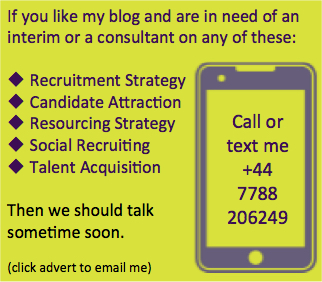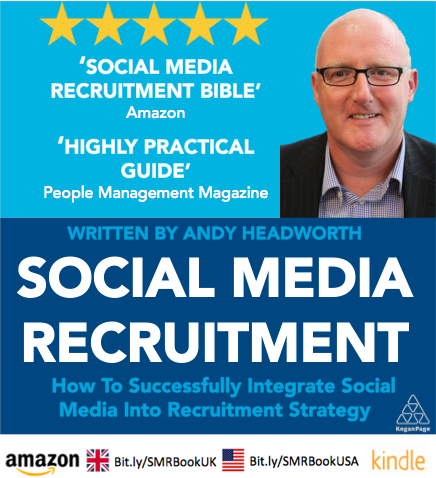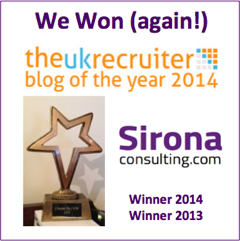Innovative Way Of Using Spotify To Attract Talent
Over the last month I have attended (and spoken) at several HR and recruitment conferences across different parts of our industry. It has been really interesting to see talent acquisition from different perspectives, and hear the challenges of recruitment, HR and Talent Leaders. Of course, these challenges are not anything new, especially in some of the (supposedly) mainstream areas like ATS, metrics, direct resourcing, employer brand and social media (recruitment). There still is plenty of innovation around though, as demonstrated by the Spotify case study in this post.
I am not finished with conferences just yet either, as I am going along to the People Analytics Conference this week, to learn more about how analytics are going to play a much more significant part in recruitment.
Other industries are more responsive to change than HR and recruitment, and I believe they reap the benefits accordingly. Dr John Sullivan, the Silicon Valley HR Thought Leader believes we will are seeing a big change with a trend towards a new breed of recruiting professionals. He thinks that many current recruitment practices can and will now become obsolete in as few as 18 months time! (Maybe not as fast as that IMO but quicker than many will like!).
Sullivan believes there is shift towards companies requiring business focused recruitment professionals who he refers to as ‘consultants’ (in the true sense). With a business acumen and skills in finance, data, technology, social media, consulting and sales/marketing, the recruiters of tomorrow will be more business rounded.
I have to say that I find myself agreeing with Sullivan. But then again I would, as I possess a consulting skill set that includes finance, data, technology, social media, and sales/marketing expertise. [Feel free to reach out to me if that is a skill set your company is looking to hire 😉 ] You can read Sullivan’s entire thought provoking post here.
So back to my recruiting conference observations.
Question: how long does something have to be around for it to be classed as mainstream and widely adopted?
Answer: in the real world probably 3-5 years - whereas in HR and recruiting it is obviously 10+ years 🙂
Social media is over 10 years old now and STILL companies are not fully embracing it within talent acquisition. In one respect it is good for me as my ‘how to’ book, Social Media Recruitment published last year is still selling well around the world. However, in another respect I find it strange that companies have not seen the undoubted benefits, of the many people networks that can be used in different ways for recruitment.
I asked many people I met at the conferences why social media hadn’t been embraced quicker, and commonly it was the alignment to the business that proved to be challenging for them. Many were struggling to get the ‘buy-in’ from above for using social media platforms other than LinkedIn. Without aligning your social media objectives with your business objectives then achieving long term success is going to be difficult.
I was asked to explain how you could do this (which was the reason for this post) to demonstrate to senior management, that social media should be considered as a credible recruitment strategy. So here are four examples of aligning a business objective to social media:
- Business objective: reducing reliance on recruitment agencies and therefore reduce costs.
Aligned social media objective: use social media to expand the company’s brand footprint and attract more candidates to the career site. - Business objective: track competitor activity to identify new potential client leads.
Aligned social media objective: using social media tools to monitor competitor activity and identify who are following them on LinkedIn and Twitter. - Business objective: drive traffic to your website landing page to promote the new recruitment campaign and attract 100 new candidates.
Aligned social media objective: use a blog (on your website) to post regular content and share it on social media sites to drive traffic back to the website. - Business objective: identify and source a wider range of developer candidates than just from those on LinkedIn to increase the calibre of the development team.
Aligned social media objective: source developers from technology- focused networks such as StackOver ow or Github.
These are obviously simple examples, but ones that you can extrapolate further for your own needs.
How a recruiter at Spotify got the attention of sought-after developers to work for them.
A simple yet superb case study (one of many good ones from my book) can show you what I mean, using the fourth example I have quoted above.
The recruitment team at Spotify, the music streaming service, had an objective to source a wider range of developers than the existing recruiting platforms allowed them to reach.
The recruiters needed to grab the attention of developers. André Hellström, one of their recruiters, came up with a clever way of using their own product to do this. He knew developers often plug their headphones in and listen to music while working. His idea was to build his own style of Spotify music playlists - and when he engaged with the developers on sites like StackOverflow, Github and Twitter he simply sent them the bit.ly link. This is an example of a playlist he sent them to get their attention for working at Spotify:
Have you figured it out yet? Read down the titles of the songs and it gives you the ‘special’ message. Clever, innovative and FREE. It certainly worked for André.
How would you feel if you received this approach? It would certainly get your attention, wouldn’t it? Why not try it yourself?
This is what you call literally aligning your business with social media recruitment 🙂
If you are having problems justifying social media or aligning it to your business needs, then maybe it is time for you to share some of your nice coffee with me. Just send me an email and let’s have a chat about how I could help you.
And finally if you haven’t got your copy yet, don’t forget to buy a copy of my new book where there are many more superb examples of case studies like this one from Andre.











